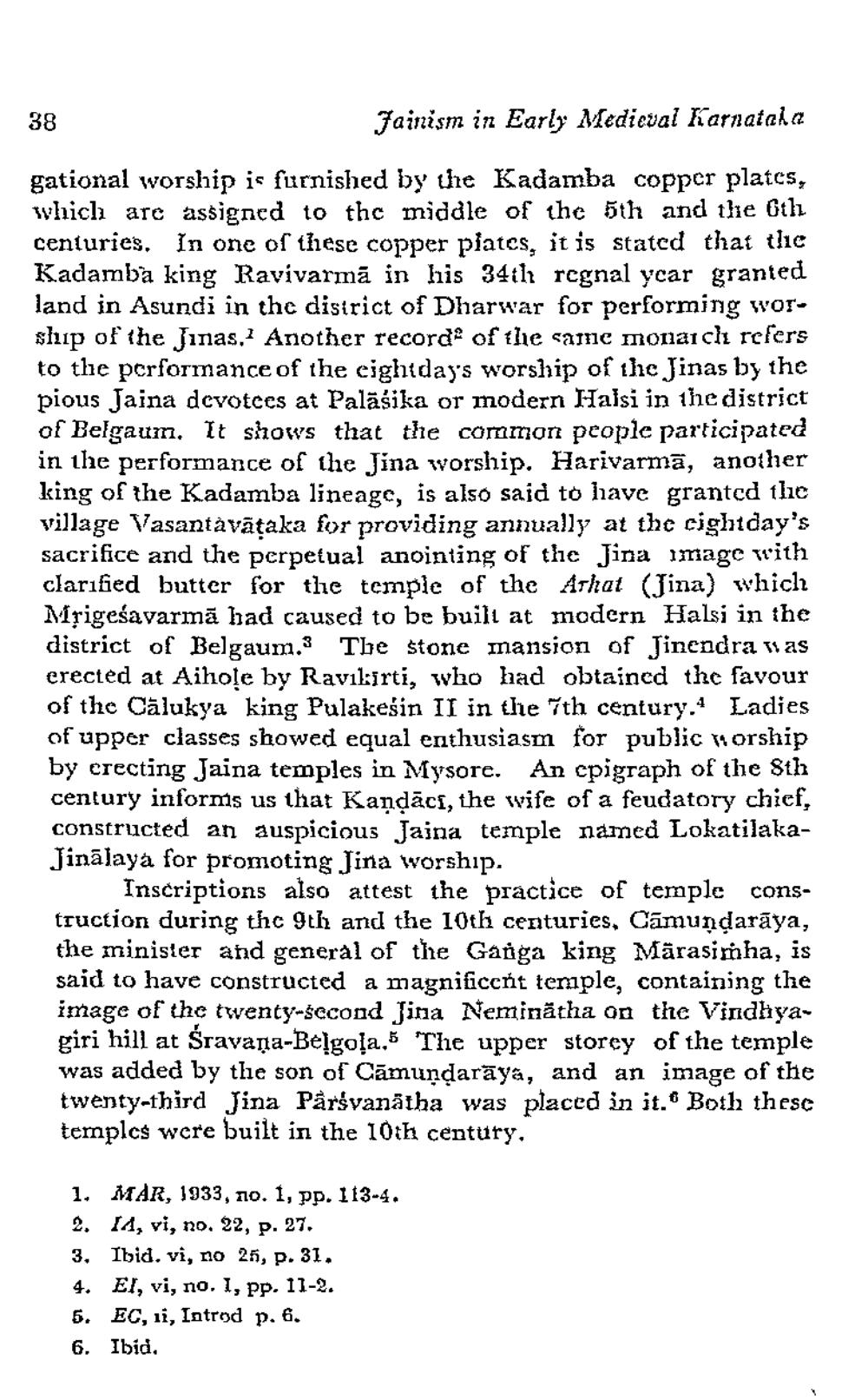________________
38
Jainism in Early Medieval Karnataka
gational worship is furnished by the Kadamba copper plates, which are assigned to thc middle of the 5th and the 6th centuries. In one of these copper piates, it is stated that tlic Kadamba king Ravivarmā in his 34th regnal ycar granted land in Asundi in the district of Dharwar for performing worsłup of the Jınas.Another record of the same monarcit refers to the performance of the cightdays worship of the Jinas by the pious Jaina devotces at Palāśika or modern Halsi in the district of Belgaum. It shows that the common people participated in the performance of the Jina worship. Harivarmā, another king of the Kadamba lineage, is also said to have granted thic village Vasantàvātaka for providing annually at the eightday's sacrifice and the perpetual anointing of the Jina image with clarified butter for the temple of the Arhat (Jina) which Mrigeśavarmā had caused to be built at modern Halsi in the district of Belgaum.3 The stone mansion of Jinendra vas crected at Aihole by Ravikirti, who had obtained the favour of the Cālukya king Pulakesin II in the 7th century.4 Ladies of upper classes showed equal enthusiasm for public worship by crecting Jaina temples in Mysore. An cpigraph of the 8th century informs us that Kandācí, the wife of a feudatory chief, constructed an auspicious Jaina temple named LokatilakaJinālaya for promoting Jina worship.
Inscriptions also attest the practice of temple construction during the 9th and the 10th centuries, Cāmundarāya, the minister and general of the Ganga king Mārasimha, is said to have constructed a magnificent temple, containing the image of the twenty-second Jina Neminätha on the Vindhyagiri hill at Sravana-Belgoļa,5 The upper storey of the temple was added by the son of Cāmundarāya, and an image of the twenty-third Jina Pàrśvanåtha was placed in it. Both these temples were built in the 10th century,
1. MAR, 1933, no. 1, pp. 113-4. 2. 14, vi, no. 22, p. 27. 3. Ibid. vi, no 25, p.31. 4. El, vi, no. 1, pp. 11-2. 5. EC, 12, Introd p. 6. 6. Ibid.




